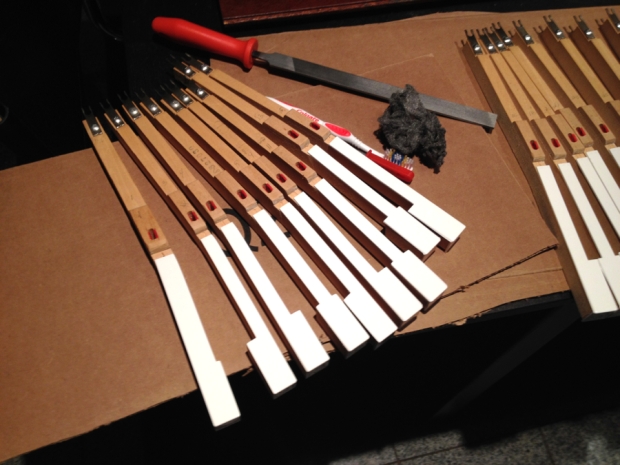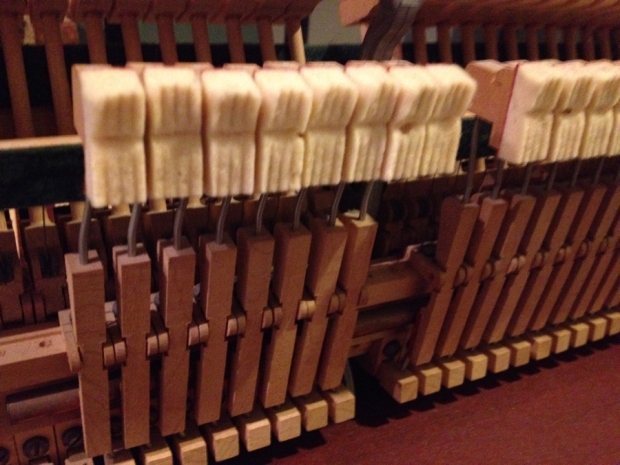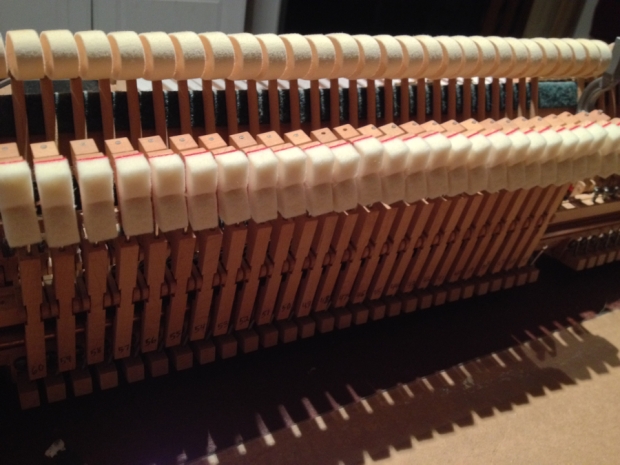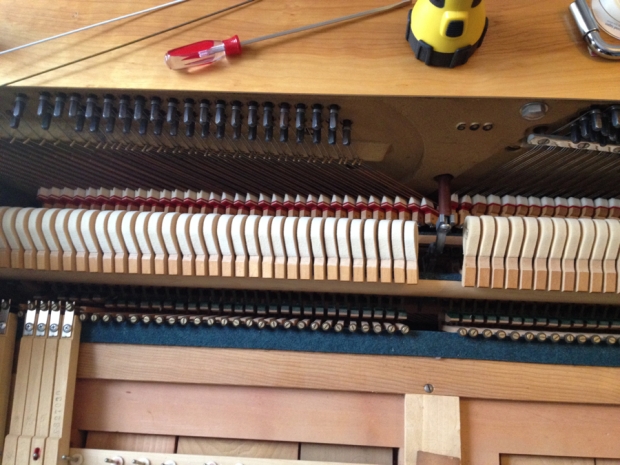Best to just jump right in I suppose, though with just a slight bit of caution.
This is the first post in what I hope will be an on going analysis of the E Major Fugue in 4 voices from J.S. Bach’s Well-Tempered Clavier, book 2. This could could wind up being a lengthy series of posts either because of the unbelievable amount of information in this fugue, or because I suspect there might be a few mis-steps along the way that might need to be addressed again later. Fugues have been a growing fascination of mine for the past few years, and perhaps pulling one apart and really focusing on the details might help to put some of the uncertainties and ambiguities to rest.
THE SUBJECT AND EXPOSITION (measures 1-8)
The E Major Fugue begins with a very simple 5-note subject in the bass. The subject is answered first in the tenor voice at the 5th, then answered again at the octave in the alto voice. The subject appears in the fourth and final soprano voice, again at the 5th. The exposition is complete after the introduction of all four voices, followed by a brief 2-measure codetta that modulates to the dominant key and into the first episode.
More will be said about the countersubjects later.
A quick note about differences in publications of this fugue: The score that the I use above to illustrate the analysis of the exposition shows the time signature as cut time. However, looking at the sum of the notes within the measures, it’s clear that it doesn’t quite add up.
My first source for the fugue in E Major is a Schirmer edition of the complete WTC , Book 2, which has the time signature indicated with two cut time symbols, shown below. This makes sense based on the notation, which could also be written as 2:1 or 4:2.
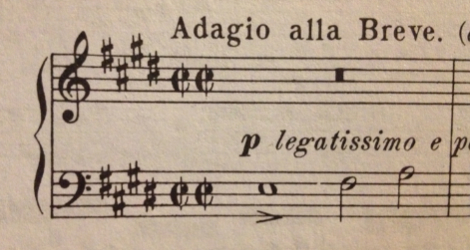
And below, another scan from an unknown source. I quite like this one, the common time symbol with two lines to indicate a 4:2 or 4:1 meter.
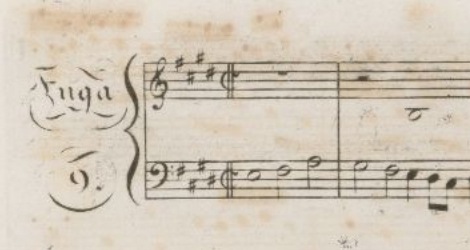
The image below is an autograph score credited to Anna Magdalena, which simply includes cut time to indicate the meter. Also interesting is the use of C Clef on the treble staff, the order and manner of notating the key signature (six #s including octaves), and the way Bass Clef is drawn.

The next post will look at the first episode of the E Major Fugue, which has moved into the dominant key and includes the voices appearing in stretto.





